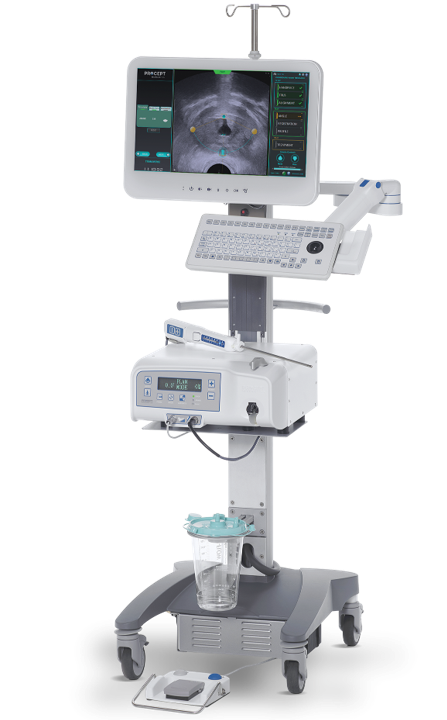Cutting-Edge Equipment
Radiation Therapy System: TomoTherapy
TomoTherapy delivers radiation precisely according to the shape of the tumor. Utilizing Intensity Modulated Radiation Therapy (IMRT), the shape and intensity of the radiation are adjusted in complex ways through computer control, allowing for 360-degree irradiation. This technique concentrates a large amount of radiation on the tumor while minimizing exposure to surrounding healthy organs. As a result, the effectiveness of the radiation therapy on the tumor is increased, and side effects are reduced.

320 multi-slice CT
High precision imaging in 0.35 seconds
Compared to traditional CT technology, the 320 multi-slice CT covers 16 cm of anatomy, an area large enough to capture a full image of an organ. Images are captured in 0.35 seconds with just one rotation of the scanner. This innovation means it is now possible to image the entire heart and brain in a single rotation and in a fraction of a second.

PET-CT
“PET” stands for Positron Emission Tomography. This imaging technique involves injecting a substance that emits positrons (a type of radiation). By detecting the radiation emitted, we can visualize the distribution of the substance within the body.
There are various types of PET scans depending on the substance used. Currently, the most common type is the FDG-PET scan, which uses a glucose-like substance called FDG (fluorodeoxyglucose). Cancer cells take up more glucose than normal cells, allowing us to detect cancer by using this method.

3.0 Tesla MRI
With the 3.0 Tesla MRI, it is possible to determine the composition of tissues (what components they are made of), allowing for highly accurate diagnostic examinations to be performed as routine tests.
High-resolution images can be obtained not only of the head but also of the entire body, including the abdomen and cardiovascular areas. Additionally, by understanding the composition of tumor tissues, it provides crucial information to determine whether they are benign or malignant.

Brachytherapy (RALS)
RALS is a type of radiation therapy for malignant tumors. By delivering radiation very close to the tumor, it is possible to administer a high dose, effectively killing the tumor cells. Since the radiation does not spread far, the exposure to surrounding healthy tissue is minimized, reducing side effects.

Aquabeam Robot System
The Aquabeam Robot System stands out as the first-ever fully automated device designed specifically for robotic prostate surgery. This system has gained attention as a treatment method that restores the prostate to its youthful state, and the first unit was introduced at Shonan Kamakura General Hospital.
Compared to traditional treatment methods, the Aquabeam Robot System results in significantly less bleeding and is minimally invasive. Unlike methods that use electric scalpels, this system causes no thermal damage to the prostate, ensuring there is no impact on the erectile nerves around it. Moreover, it has the major advantage of not affecting the urethral sphincter or the ejaculatory ducts, making it a safe treatment option for relatively younger patients.
The procedure involves the high-speed injection of saline solution to remove the prostate. Once general anesthesia is administered, the doctor uses ultrasound to map the resection area to the robot. The surgery consists of two rounds of injections, each lasting approximately five minutes. The doctor merely adjusts the water pressure, significantly shortening the overall surgery time.








